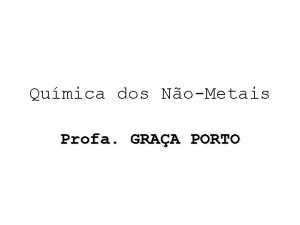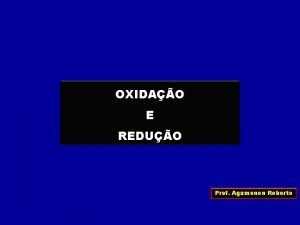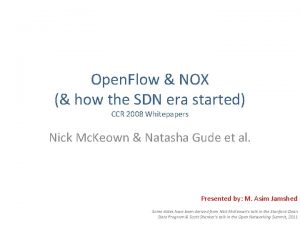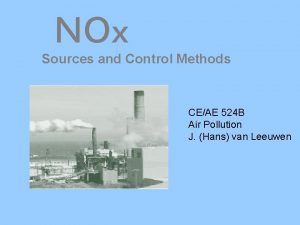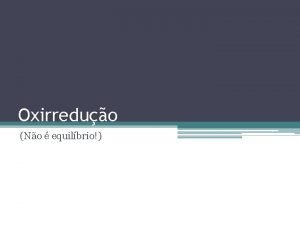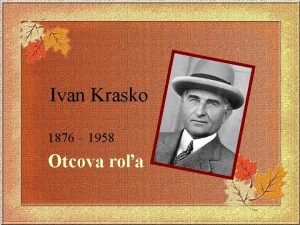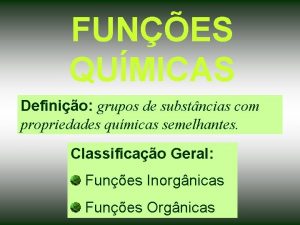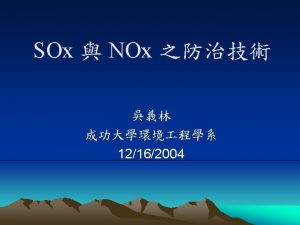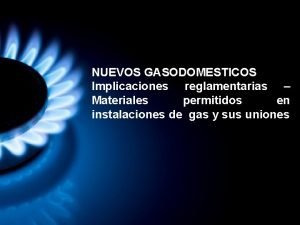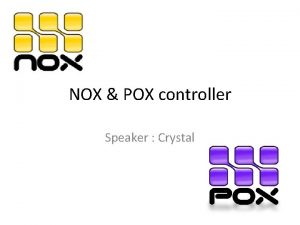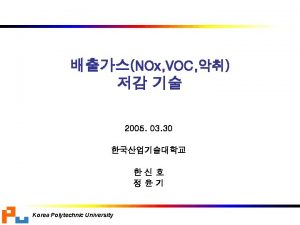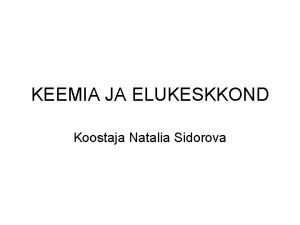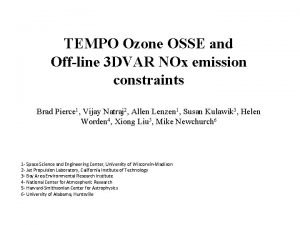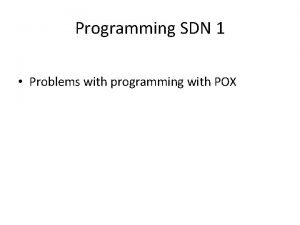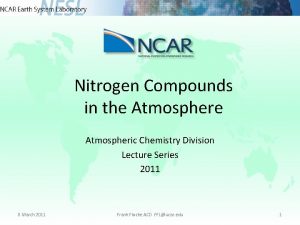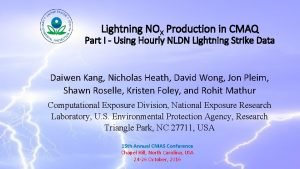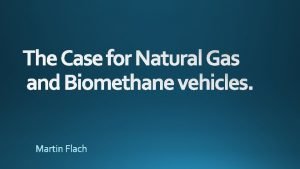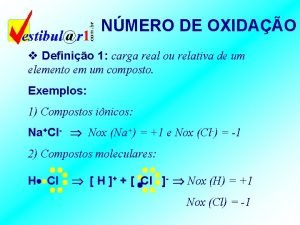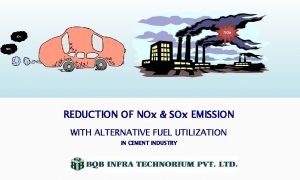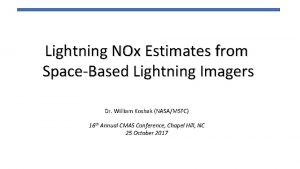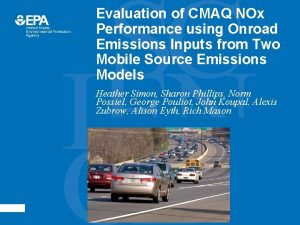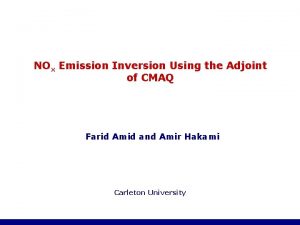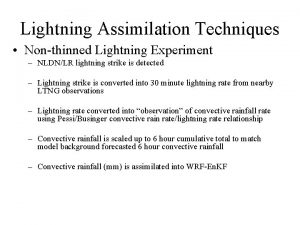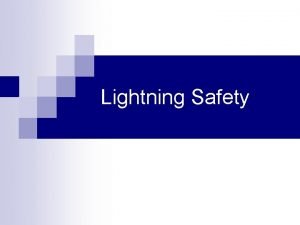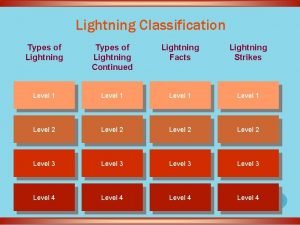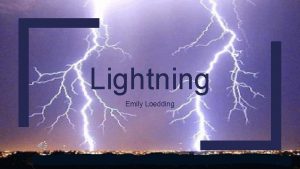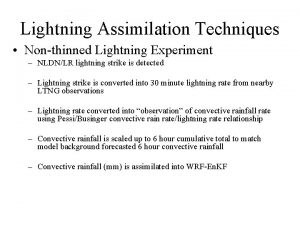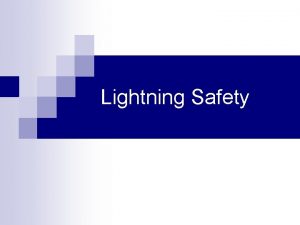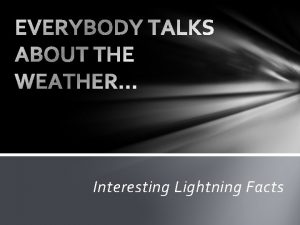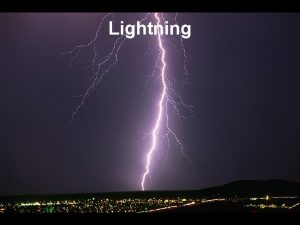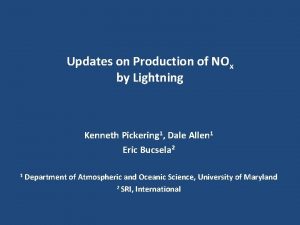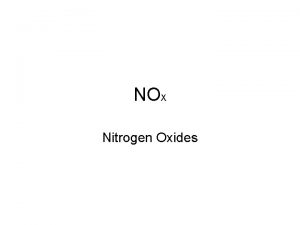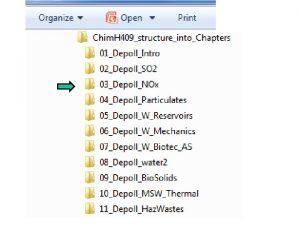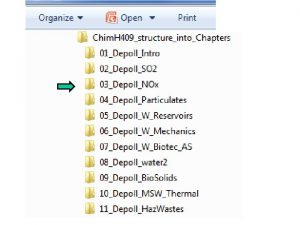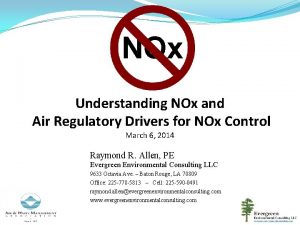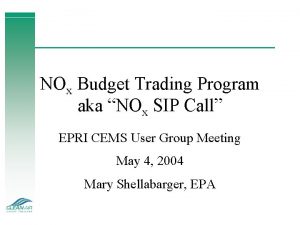Lightning NOX Production in CMAQ Part I Using






















- Slides: 22

Lightning NOX Production in CMAQ Part I - Using Hourly NLDN Lightning Strike Data Daiwen Kang, Nicholas Heath, David Wong, Jon Pleim, Shawn Roselle, Kristen Foley, and Rohit Mathur Computational Exposure Division, National Exposure Research Laboratory, U. S. Environmental Protection Agency, Research Triangle Park, NC 27711, USA 15 th Annual CMAS Conference Chapel Hill, North Carolina, USA 24 -26 October, 2016

Current Understanding about Lightning NOX • NO is produced within a lightning stroke channel during the rapid heating and cooling process by N 2 and O 2 • The global Lightning NOX (LTNOX) production is estimated to be in the range 2 -8 Tg N yr-1 (compare with present-day anthropogenic and biomass burning sources of ~26 Tg N yr-1; ~10 -15% of the total NOX budget) • NO yields per flash range from 50 to 1100 moles (NO) flash-1, most recent literature converges on the range from 250 to 350 moles (NO) flash-1.

Lightning and Air Quality Courtesy of Lee Murray, Curr Pollution Rep. , 2016 • Lightning NOX is produced mainly in the free troposphere and thus has a strong influence on the tropospheric burden of O 3 and OH. • The lifetime of lightning NOX in the free troposphere is a few days instead of hours at the surface, and O 3 production efficiencies (OPE) are an order of magnitude higher. • The impact of lightning NOX on “policy-relevant background” (PRB) is increasing due to the decrease of anthropogenic emissions.

Lightning NOX in Air Quality Models • Due to limited understanding and its relative small impacts on the surface, despite its large influence on the background composition of the troposphere, regional air quality models are just beginning to take lightning NOX into the modeling consideration in recent years. • The National Lightning Detection Network (NLDN) and various satellite data provide the scientific bases and data needs for air quality models to parameterize lightning NOX productions.

Lightning NOX Production in CMAQ 1. A primitive parameterization scheme: 1 mm/hr convective precipitation in CMAQ (RC, Rain Convective) => 147 lightning flashes for a 36 x 36 km horizontal model grid cell, which is adjustable to other resolution configurations. 2. An observation-based parameterization scheme: using the monthly mean NLDN data to constrain the lightning strikes over the domain and distribute the total lightning strikes to the local grid cells by relating NLDN strikes to grid-level RC values.

Two Practical Scenarios for Modeling Lightning NOX • Retrospective model simulations with NLDN data available ØUse NLDN data (gridded hourly) to generate LTNOX directly in the model • NLDN data not available, e. g. , air quality forecast and future climate simulations ØParameterize the LTNOX production based on variables (such as convective precipitation) predicted by the upstream meteorological model: needs to quantify the relationship between the variable used and the lightning strikes.

Good News! We now have access to the NLDN raw data over the continental United States through the lightning data contract signed by the National Weather Service (NWS) within NOAA with Vaisala, Inc. which specifies that “NWS’s contract allows the Federal Government to obtain realtime cloud-to-ground lightning data from the 48 contiguous states”. As a result, we now can directly use the NLDN data over the continental US domain to generate LTNOX in CMAQ for retrospective simulations (the raw data is gridded into hourly data as input to CMAQ)

Sum of Monthly Domain Column LTNG NO Produced by the CMAQ parameterization schemes and Hourly NLDN Strike Data for 2011 Hrly NLDN Mhly Base P 147 The primitive lightning NOX production scheme (using number 147) generates substantially too much NOx (> 2 x) than the schemes based on NLDN data.

Sum of Monthly Domain Total Column LTNO 2010 Hrly Mhly 2011 Hrly Mhly 2012 Hrly Mhly 2013 Hrly Mhly

Performance evaluations for WRFCMAQ Simulations with Monthly and Hourly NLDN data • • • WRF 3. 8 CMAQ 5. 1 CB 05, AE 6 Emissions: 2011 NEI US 12 km domain for July 2011 Scenarios: ØMonthly NLDN lightning strike data ØHourly NLDN lightning strike data • Observations: AQS Hourly O 3

O 3 bias difference Hourly NLDN – Monthly NLDN over the domain The bias at the majority of the sites decreases (cool colors), especially in the southeast region where lightning events are more prevalent

O 3 bias difference Hourly NLDN – Monthly NLDN over the domain O 3 bias decreases at 79% of the sites

O 3 error difference Hourly NLDN – Monthly NLDN over the domain Similarly, the errors at the majority of the sites also decreases (cool colors), especially in the southeast region where lightning events are more prevalent

O 3 error difference Hourly NLDN – Monthly NLDN over the domain O 3 error decreases at 84. 5% of the sites

O 3 bias/error difference Hourly NLDN – Monthly NLDN over the southeast O 3 bias decreases at 99% of the sites O 3 error decreases at 99% of the sites

O 3 mixing ratios and basic statistics for July, 2011 over the domain AQS Hrly. LTNOx Mon. LTNOx r 0. 73 0. 72 RMSE 14. 7 14. 9 NMB 11. 6 12. 7 NME 32. 4 33 MB 4. 05 4. 41 ME 11. 3 11. 5

NO 3_dep with Hrly. LTNOx (kg/ha) NO 3 Wet deposition and basic statistics for July, 2011 over the domain NADP Hrly. LTNOx Mhly. LTNOx NO 3_dep with Mhly. LTNOx (kg/ha)

Take-home Message When the hourly instead of monthly NLDN data are used: • O 3 mean bias and mean error decrease 1 -2 ppb • Largest performance improvements in eastern U. S. , especially over the southeast – 99% of sites had improvements in O 3 prediction • Slight decrease in NO 3 wet deposition • Minor impact on PM 2. 5

CMAQ updates – CMAQv 5. 2 • Significant code changes in LTNG_DEFN. F (over 200 lines modifications/additions) • Two input files: ØThe hourly gridded NLDN lightning strike data (24 hours/day) ØParameter file – ocean mask, climatological IC/CG ratios, and parameters for parameterization scheme when NLDN data are not available (e. g. forecast and future climate studies). Details to be presented next • Two diagnostic files: vertical profile (3 D) and column total (2 D) • Compare to CMAQv 5. 1, no preprocessing for the lightning parameters are needed for users.

Run script configurations • • setenv LTNGNO "In. Line“ setenv LTNGPARAM Y setenv USE_NLDN Y setenv LTNGOUT 1 $OUTDIR/${EXEC}"_LTNGDIAG 1". ${CTM_APPL} setenv LTNGOUT 2 $OUTDIR/${EXEC}"_LTNGDIAG 2". ${CTM_APPL} setenv NLDN_STRIKE $NLDN_LTpath/NLDN. 12 US 1. ${today}. ioapi setenv LTNGPARMS_FILE $IN_LTpath/LTNG_All. Parms_12 US 1. ncf

Gridded NLDN lightning strike data availability • Hourly data over the conus US 12 km domain in IOAPI format (direct input to CMAQ) and able to provide data for any other finer/coarser domains if domain description files are provided. • 30 minutes data over the conus US 4 km domain in net. CDF format (for WRF input and next generation air quality models) – plan to release publicly. Can be regridded into different domains and/or time intervals (make a regrid program available)

What’s Next: • Evaluate the vertical profiles with field measurements (such as aircraft, sonde, lidar measurements) and make necessary adjustment. • Test the sensitivity to LTNO production rate and obtain the confidence interval • Expand to hemispheric or even global applications through acquisition of global lightning data

